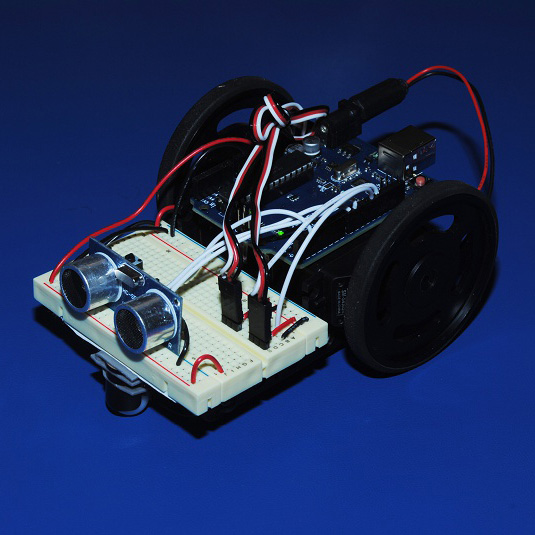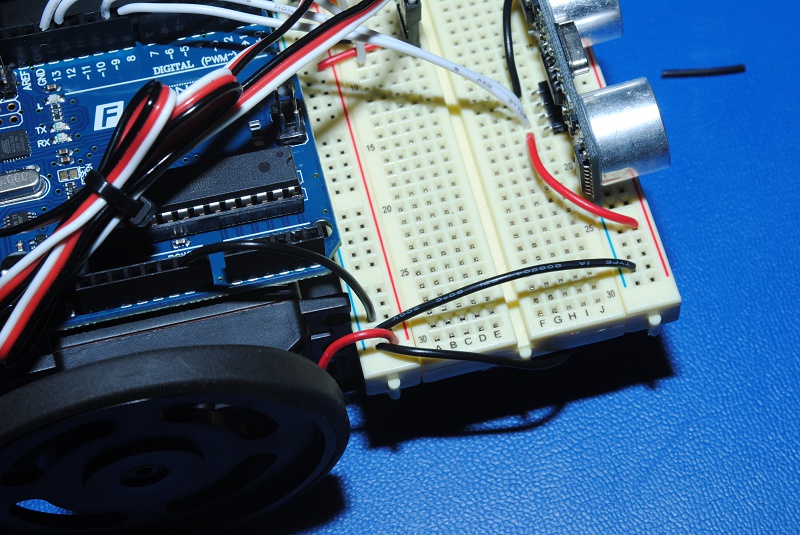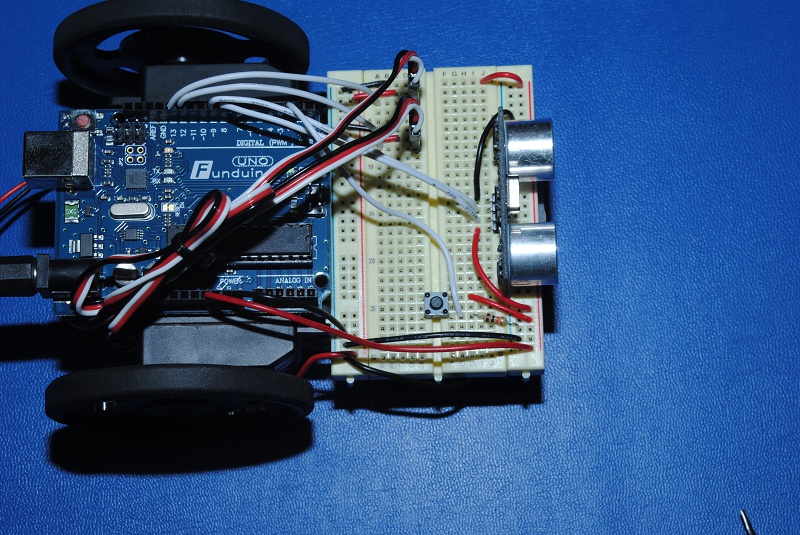
This guide shows you how to quickly and easily build an Arduino robot. Robotics is an exciting and fun hobby that has become very affordable in recent years. What would have required a lot of money and experience to do a few decades ago is now affordable, easy, and most of all, FUN!
Not sure if Arduino is right for you? Make:’s interactive Board Guide lets you dial into the field to find the best board for your needs.
The parts used in this guide can all be purchased together in the Funduino UNO Robotics Kit, but you can follow along with a different kit just as easily as long as you have similar components.
Keep in mind that this tutorial shows just one way to make a robot — you’re limited only by your budget and imagination. If you want to buy more sensors, or a nicer chassis, go for it! The entire process may take an hour or two, so get ready to have some fun!





























